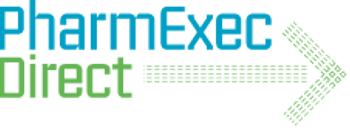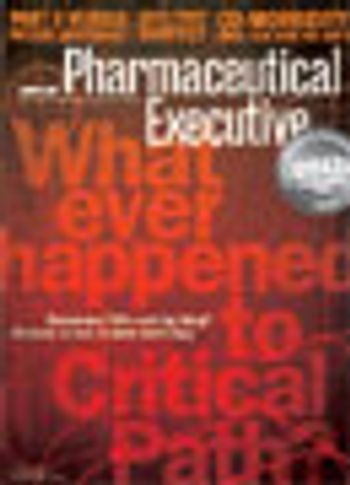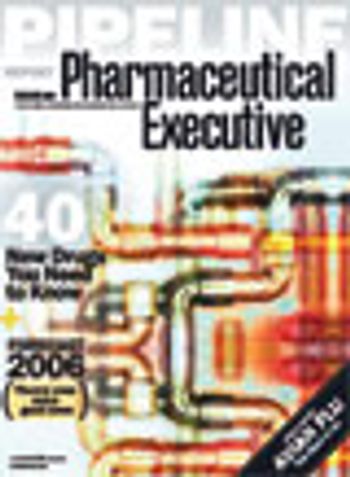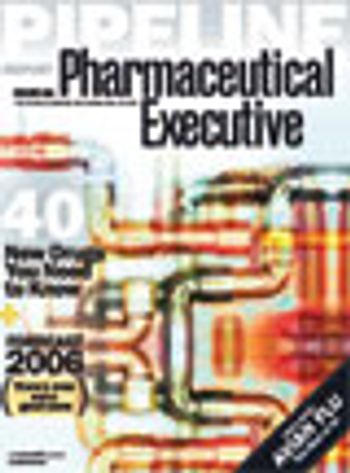
An entertaining Internet program that allows Americans to see where a dollar goes after they spend it, helped scientists develop a formula for how infectious diseases spread geographically in United States.

An entertaining Internet program that allows Americans to see where a dollar goes after they spend it, helped scientists develop a formula for how infectious diseases spread geographically in United States.

Upcoming competition, a weak pipeline, and existing marketing agreements limit the pool of prospective buyers, experts say.

Observing drug candidates in humans early in the development process could save investigators time and money, experts say.

Q&A with supply chain expert Prashant Yadav, lead investigator on a study of how to improve flu vaccine distribution.

Learn how RFID technology works and what it could mean for pharmacies down the road.


Two experts are split over the importance of research on a gene linked with a rare genetic type of Parkinson’s disease. One thinks it could hold the key to new treatment. The other thinks it is too rare to be relevant.

Q&A with Dr. Allan Brett, professor at the University of South Carolina and director of the General Internal Medicine division. He authored a recent perspective about on-demand Tamiflu prescriptions in the New England Journal of Medicine.

In order to increase production and lower the costs of making anthrax vaccines, a research team grew a protein from anthrax bacteria in tobacco leaves.

Often, post-approval marketing studies don't materialize because drug companies question their value. Independent review of the need for such studies would address pharma's concern that they may be warranted.

Big Pharma's hiring slowdown is not translating into a growing demand for contract sales organizations.

Witnessing an industry's wild ride is perhaps the best reason to work for a business magazine. You've given us 25 years of excitement. And we plan to pay you back.

There was a time when Merck was looked upon as the granddaddy of all pharma companies. As the self-proclaimed oldest pharmaceutical and chemical company in the world, people wanted to work at Merck for its sterling reputation, excellent products, and job security.

As americans age, they are likely to suffer from more than one chronic condition at a time. So as the country's population grays, the rate at which patients presenting co-morbid indications will increase, as will the absolute number of patients whose treatment must be adjusted for more than one disease. These are not surprising facts, but they deserve careful consideration by pharma manufacturers and marketers.

Doctors and academics are praising Pfizer’s plan to allow the Cleveland Clinic to compare Celebrex with two NSAIDs. Is the company courageous, or is it taking to big of a risk?

A recent spate of false positive results using OraSure’s test has officials and company representatives scrambling to figure out what is causing these anomalies and how to stop them from impacting testing rates.

Medicus International has been successfully developing global communications for 30 years.

Many companies start up “eClinical” projects. But what is eClinical – and how does it support the R&D strategy?

The embattled pharma company needs to walk a tightrope between reassuring employees and pleasing investors. Can it succeed? Analysts and personnel experts share their insights.

The electronic revolution in clinical trials is still a work in progress, but researchers say it's time to bring EDC to the preclinical world.

A new understanding about how one class of bacteria protects itself from the environment could dramatically cut tuberculosis treatment time.

Medicare Part D launches. $23 billion worth of patents expire. FDA wrestles with safety issues. Pharma prepares for unprecedented cost cutting and restructuring. 2006 promises to be banner year-if you like roller coasters.

Some people are infected by HIV strains that are already resistant to FDA-approved drugs because they were transmitted by someone who developed resistance while receiving antiretroviral therapy. As a result, these patients often fail therapy.

Dry? Not quite. Instead of 1990s-style blockbusters, pharma's new molecules are niche drugs, cancer treatments and-at last-innovative mechanisms for troublesome targets.

PharmExec's 2005 Pharma Knowledge Quiz

The biggest threat to the success of polio eradication is Nigeria, where the immunization program was suspended on religious grounds in some parts of the country in 2003 and 2004.

Find out how you did on our December 2005 quiz.

Pargluva was a bad bet from early on. Analysts say so. Can BMS still save face?

Log on to CrazyMeds.org. Find out what patients say about your drugs, and what they think doctors and pharma don’t tell them.

A look at what the editors of Pharmaceutical Representative have planned for 2006.